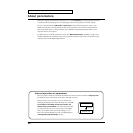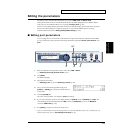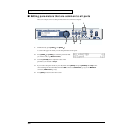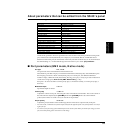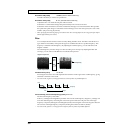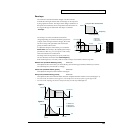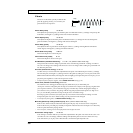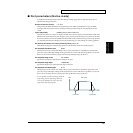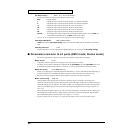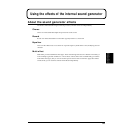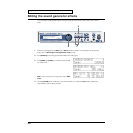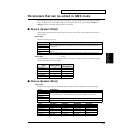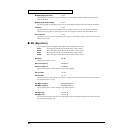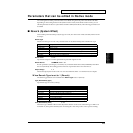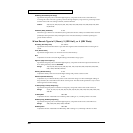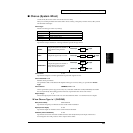
38
Using the internal sound generator
Part Output Assign MFX, 1, 2, 1L, 1R, 2L, 2R, PATCH
This specifies where the output signal of the part will be sent.
MFX: Output to MFX.
1: Output the unprocessed sound from OUTPUT 1, without using MFX.
2: Output the unprocessed sound from OUTPUT 2, without using MFX.
1L: Output the unprocessed sound from the L jack of OUTPUT 1.
1R: Output the unprocessed sound from the R jack of OUTPUT 1.
2L: Output the unprocessed sound from the L jack of OUTPUT 2.
2R: Output the unprocessed sound from the R jack of OUTPUT 2.
PATCH: The settings of the patch (instrument) will be applied. If the patch is set to use MFX, the
sound will be sent to MFX. If not, the DRY sound will be output.
* Select 1L, 1R, 2L, or 2R when you want to use the output jacks as four parallel outputs.
PART Output MFX Select MFX-A, MFX-B, MFX-C
If MFX is selected for Part Output Assign, select one of the three MFX units to which the sound will be
sent.
PART Dry Send Level 0–127
This specifies the level of the output to the output destination you’ve selected for Part Output Assign.
■ Parameters common to all parts (GM2 mode, Native mode)
The following parameters common to all parts can be edited from the panel of the SD-80.
Master Volume 0–127
Adjusts the volume of all parts. Increasing this value will increase the volume.
The basic overall volume of the SD-80 is adjusted with the [VOLUME] knob. If the [VOLUME] knob is set
to the minimum position, there will be no sound even if you use this parameter to raise the volume.
Master Fine Tuning 415.3–440.0–466.2 Hz
When you are playing in an ensemble with other instruments, or want to adjust the SD-80 to the tuning of
another instrument, you can adjust the Master Tuning in a range from 415.3 Hz to 466.2 Hz. The
displayed value (for example 440.0 Hz) is the frequency of the A4 note (note number 69).
Master Coarse Tuning -24–0–+24
This parameter transposes the pitch of all parts in semitone steps. For example, when using your
sequencer software to play song data, this parameter can be adjusted to change the key without having to
change the settings of your software. As another example, you can adjust this parameter to transpose the
pitch to a comfortable range when you want to sing along with song data that is too high or too low for
your voice.
Increasing (decreasing) this value by one will raise (lower) the pitch by one semitone. Thus, a setting of 12
will change the pitch by one octave. With a setting of 0, the pitch will not be transposed. This parameter
lets you adjust the pitch in semitone steps over a range of +/-2 octaves.
* The pitch of drum parts will not change even if you adjust the Master Coarse Tuning to transpose all parts.



